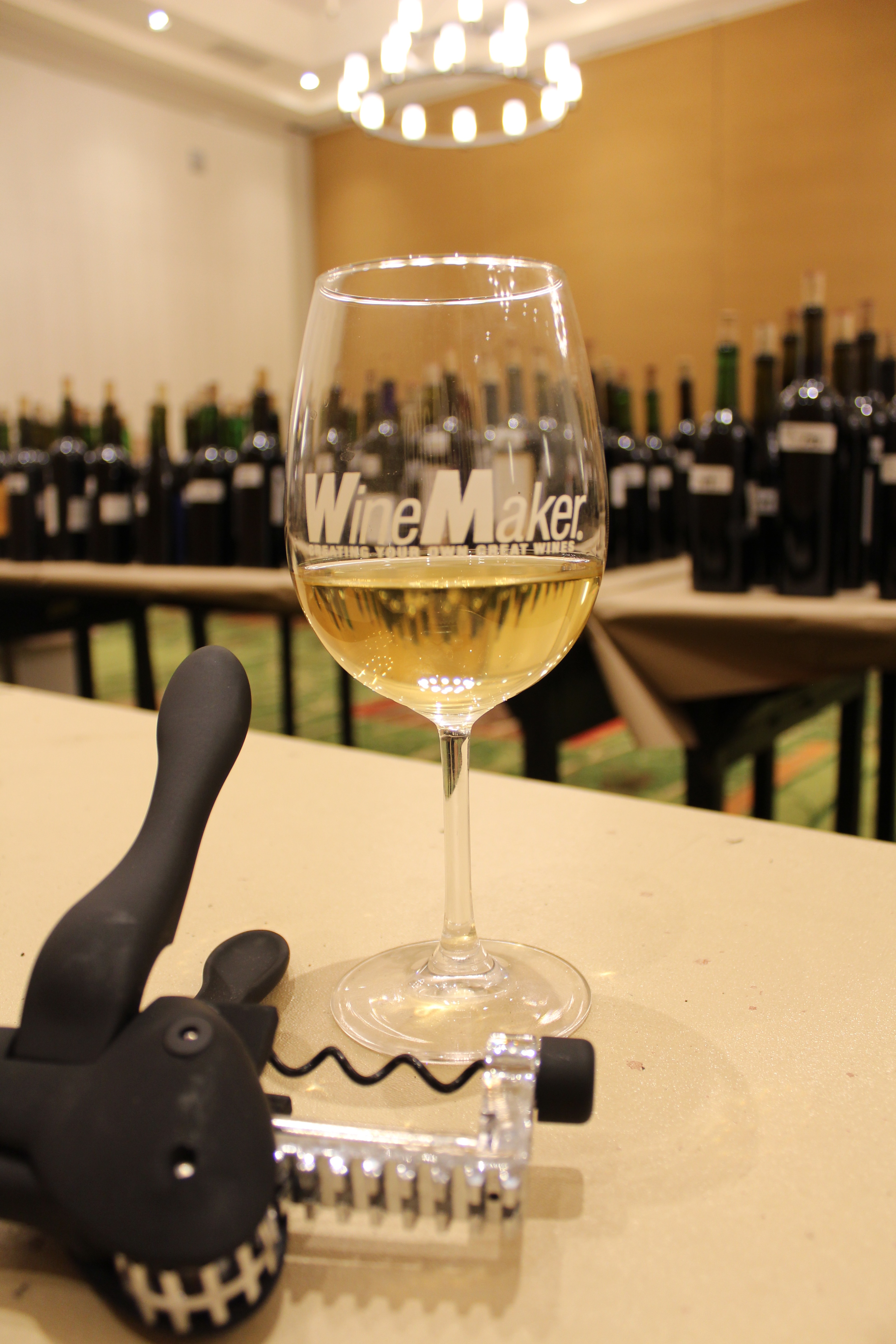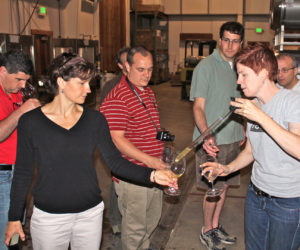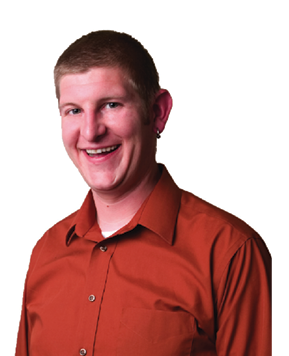 Managing oxygen is key in making reduced-sulfite or sulfite-free wines. A dissolved oxygen (DO) meter is a wise investment; you can buy a portable model for less than $300. Then you can ensure that your DO level at bottling is less than 2 mg/L to give you peace of mind that your wine will age gracefully and show its full freshness once uncorked; the higher the DO at bottling, the more sulfite you will need to add. Note: In the following, 100 mg/L translates to 2.3 g or approximately 0.08 oz. per 23-L (6-gal.) carboy.
Managing oxygen is key in making reduced-sulfite or sulfite-free wines. A dissolved oxygen (DO) meter is a wise investment; you can buy a portable model for less than $300. Then you can ensure that your DO level at bottling is less than 2 mg/L to give you peace of mind that your wine will age gracefully and show its full freshness once uncorked; the higher the DO at bottling, the more sulfite you will need to add. Note: In the following, 100 mg/L translates to 2.3 g or approximately 0.08 oz. per 23-L (6-gal.) carboy.
General considerations
In all protocols, it is absolutely imperative that you remove any and all rotten grapes; otherwise, laccase enzymes will cause browning in must and can linger on in wine to continue their browning effects. Always insist on high-quality grapes; any comprise in fruit quality will compromise wine quality and possibly lead to microbial spoilage.
For white varietals rich in polyphenols from overripe grapes, whole-cluster pressing is preferable to minimize polyphenol extraction and oxidation, and must browning. Must from overripe grapes will need to be processed with minimal oxygen exposure. Low-polyphenol grapes can be crushed/destemmed prior to pressing. Oxidized polyphenols left in the must during fermentation will cause any SO2 to bind and therefore reduce protection.
Choose an appropriate yeast and get the fermentation going as quickly as possible to minimize risks of microbial activity; a yeast starter is recommended.
Several days before inoculation of the whole batch, prepare a yeast starter using a small volume (e.g. 2% of the must to be inoculated) of must from concentrate, fresh juice, or grape juice, and add yeast and yeast nutrients. With the yeast starter at room temperature, let fermentation start and once it becomes vigorous, add the starter to the batch. The trick is to have the starter going just when the juice is ready to be inoculated.
As soon as the fermentation is complete, protect the wine against oxygen ingress (except where micro-ox is practiced). Always keep carboys and other vessels topped up. And again, we must emphasize the importance of maintaining a highly sanitary environment to reduce the risks of spoilage.
I strongly recommend filtering wine down to at least 0.45 microns — those filter pads labeled “fine,” #3 or AF5, for example, depending on the manufacturer — before bottling. These don’t provide true sterile filtration but will greatly reduce latent yeasts and bacteria population that may cause spoilage.
“Terpene” protocol
The terpene protocol concerns white varietals high in free terpenoids found in aromatic grape varieties such as Muscats, Gewürztraminer, Riesling and Chenin Blanc.
Terpenoids are those compounds responsible for imparting fruity and floral scents, and they exist in free forms in these varietals — that’s why they are distinctively odiferous even before they are fermented. In most other V. vinifera varietals, terpenoids exist as glucosides (i.e. they are attached to sugar molecules), and only become free under the action of enzymes during yeast fermentation. Free terpenoids are characteristically tolerant to oxidation but can become muted by sulfurous compounds, and therefore, these varietals are best suited for winemaking without sulfites.
At the crusher/press, estimate your juice yield and add 250 mg/L of ascorbic acid to the receiving vessel so that pressed juice is immediately protected.
Cold settling and juice handling is where it all plays out in this protocol. Normally in white winemaking, press-run juice is allowed to cold settle and possibly treated with bentonite to clarify the juice, and is then racked to separate the clear juice from precipitated, sulfur-containing solids and oxidized polyphenols. But in this protocol, regularly shake the stoppered carboy containing the press-run juice for several hours to maximize extraction of free terpenoids and those fatty acids that will ensure a good fermentation. Keep the juice in the 46–61 °F (8–16 °C) range but do not treat with bentonite, which could affect fermentation efficiency; pectolytic enzymes are however recommended to break down any pectin that may cause haze later on. In larger containers, the solids can be gently stirred back into suspension regularly using a lees stirrer. Allow the juice to settle for 24 hours or until very clear and then rack as usual into another vessel.
Inoculate with a yeast starter using a good fermenting yeast suited for cool fermentations and that produces as little sulfite and hydrogen sulfide (H2S) as possible, and supplement with yeast nutrients to minimize the risk of H2S production. Keep in mind that wine quality will greatly suffer if you need to aerate the wine later to get rid of H2S.
Free (in free terpenoids) also means volatile, and so, conduct the alcoholic fermentation (AF) at cooler temperatures, around 55 °F (13 °C) being sure not to let it exceed 61 °F (18 °C) at the peak of fermentation, to preserve all those delicate aromas. What you’re looking for here is a low and steady fermentation that avoids temperature spikes, so temperature control is important; fermentation should take about 6–8 weeks to complete.
Except in the case of high acidity due to malic acid, malolactic fermentation (MLF) is generally not recommended in these wines, which could otherwise impart aromas and flavors incompatible with these types of wine. Where MLF is desired, co-inoculate with cultured Oenococcus oeni bacteria so as to have the MLF complete before the AF does and not extend the overall fermentation period. In this case, you will need to add 200–500 mg/L of lysozyme; only add sulfite if your wine pH is above 3.6.
From the end of AF/MLF to bottling, protect the wine vigilantly from oxygen and spoilage micro-organisms. If no sulfite was added, store the wine cold, well below cellar temperature, until bottling.
“Sauvignon Blanc” protocol
The Sauvignon Blanc protocol concerns white varietals such as Sauvignon Blanc and Pinot Grigio where aromas are obtained from yeast fermentation (yeasts cleave aroma precursors into their volatile aromatic compounds). So the focus of this protocol is on the fermentation phase and where both the must and wine need to be protected against oxygen as much as possible. These varietals are usually not processed for MLF as it tends to mute some of the desired characteristic aromas.
At the crusher/press, estimate your juice yield and add 250 mg/L of ascorbic acid to the receiving vessel so that pressed juice is immediately protected; transfer the press-run juice to carboys as gently but as quickly as possible. You can also use gallotannins instead of ascorbic acid; however, gallotannins must be used with SO2 to prevent browning in the must. If you are able to source inactivated yeast containing glutathione (GSH, a naturally occurring, highly antioxidative tripeptide in grapes), such as Lallemand’s OptiWHITE®, this is the best alternative, especially if the formulation contains ascorbic acid.
Follow the lees settling and stirring techniques described in the terpene protocol and treat with a Kieselsol-gelatin or isinglass fining agent, and then rack the juice into another carboy.
Inoculate with a yeast starter supplemented with yeast nutrients and then ferment at 59 °F (15 °C). As soon as the AF is complete, chill and store the wine cold. Add lysozyme to stabilize against MLF and clarify the wine with Kieselsol-gelatin.
“Chardonnay” protocol
The Chardonnay protocol involves traditional Burgundian vinification techniques for crafting rich, full-bodied, barrel- and malolactic-fermented, oak-aged whites, and primarily deals with Chardonnay as well as such varietals as Marsanne, Viognier and Ugni Blanc. Since this style of wine is rich in polyphenols, the protocol is best suited for winemaking with minimum, if any, SO2. However, the wines will tend to have lower acidity and higher pH, meaning higher vigilance against spoilage micro-organisms.
Crush/destem and press the grapes without ascorbic acid; here, a long and slow pressing is desirable. Transfer the press-run juice into carboys by letting the juice splash to promote aeration and polyphenol oxidation, but don’t overdo it as you want to keep some polyphenols. The juice can withstand more aeration if it is richer in polyphenols, for example, if you did not destem, in which case, a hyperoxidation treatment may be suitable. The idea is to make the juice more resistant to the effects of oxygen in downstream processing and aging.
Let the juice cold settle for 24 hours, or until clear, without shaking or stirring, and then rack into other carboys or barrels if barrel-fermenting. Inoculate with yeast supplemented with yeast nutrients and then ferment at no more than 68 °F (20 °C). If fermenting in carboys or stainless steel tanks, add oak chips or staves. Be sure to ferment the wine completely dry and then proceed with the MLF using Oenococcus oeni bacteria. Once the MLF complete, add 200–500 mg/L of lysozyme (with sulfite if the pH is above 3.7) to stabilize the wine, and then store the wine cold.
Bottling
Bottling is the most critical operation in these protocols as it involves high ingress of oxygen. The less DO in the wine at bottling, the smaller the amount of sulfite you will need to add. So work quickly and treat the wine as gently as possible avoiding any high-oxygen intake procedures such as splashing.
Filter the wine down to a fine grade, sulfite (the first addition!) to between 0.8–1.0 molecular SO2 based on pH and bottle immediately with high-grade natural or technical corks. In all cases, you will need a minimum of 10 mg/L of free SO2, the typical amount consumed in the bottle over a 24-month period under normal cellaring conditions. Add 100−200 mg/L of potassium sorbate if the wine has residual sugar, but never add to wine that has undergone MLF.
If you can measure DO, you can better estimate SO2 needs knowing that 1 mg/L of O2 consumes in the order of 2.5 mg/L of free SO2. For example, if you measure 2 mg/L DO, you will need (2×2.5+10) or 15 mg/L of free SO2; at 10 mg/L DO, you will need 35 mg/L. And if you want to further reduce the amount of sulfite and replace it with ascorbic acid, still add 10 mg/L of free SO2 but convert the additional amount of free SO2 required to the equivalent of ascorbic acid by applying a factor of 4.4. For example, if you need 30 mg/L of free SO2, add 4.4×(30−10) or 88 mg/L of ascorbic acid.
Note that, under normal wine conditions, namely a pH in the range 3.2–3.6, your total SO2 will be less than 50 mg/L, taking into account SO2 produced by yeast during fermentation, compared to at least twice if not three times or more that amount using a sulfite-based regimen. And what’s more important now is that any free SO2 has much less binding opportunity therefore providing better and longer protection.






